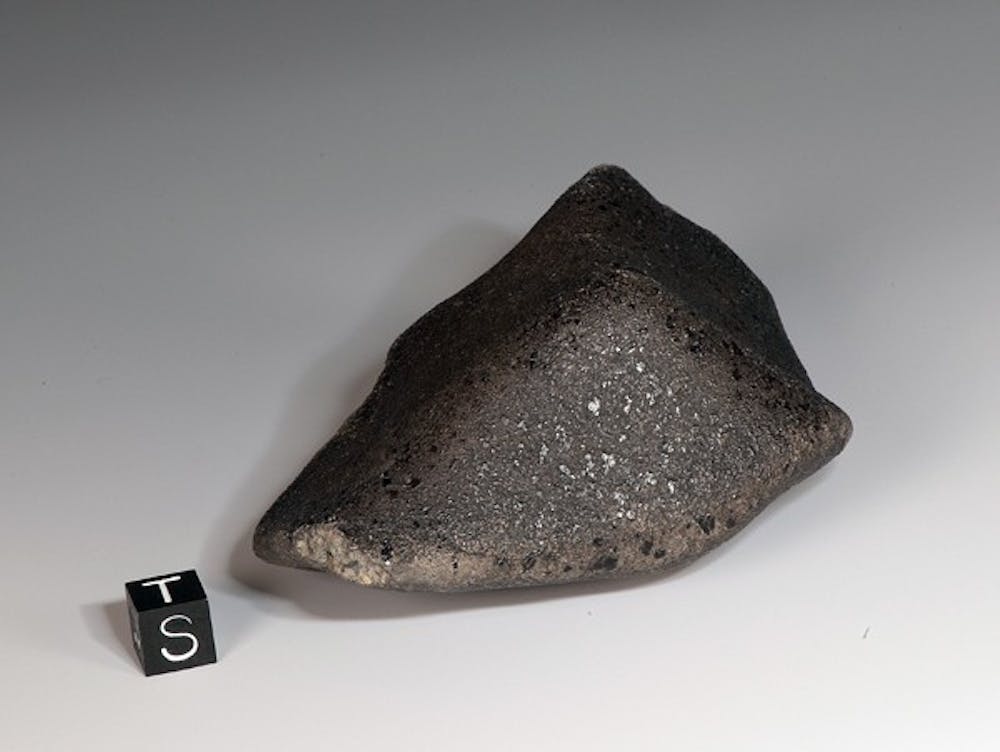The Center for Meteorite Studies at ASU obtained a rare Moroccan Martian meteorite this month to add to its world-class collection.
The black, 370-gram Tissint meteorite is the new addition to the Center’s 1,700 meteorite collection and will be the focal point in the new ISTB IV building in May.
“We are excited to have (Tissint) as part of our world class collection,” said Meenakshi Wadhwa, the director of Center for Meteorite Studies.
Tissint meteorite was found in July 2011 in southeast Morocco close to the Algerian border.
“We have a meteorite fall every 50 years,” Wadhwa said. “It’s the first time in my life a Mars meteorite has fallen.”
Wadhwa said Tissint is the fifth observed fresh fall meteorite in the last 50 years.
A fresh fall meteorite is one that was witnessed before it landed. The last fresh fall meteorite was found in Nigeria in 1962.
Tissint is significant because it is a fresh piece of the planet that has not been processed or contaminated, she said.
Fifty years ago, analytical capabilities were not as advanced as today's technology, Wadhwa said.
“In this case, (Tissint) has lower factors of contamination,” she said.
The center will research only 25 grams from the 370 grams obtained.
The center did not purchase the meteorite with cash, but through trading pieces of their collection, Wadhwa said.
She said the the University of New Mexico and several others universities have received pieces of the meteorite, but ASU has the largest amount.
Wadhwa said the Tissint would help the Center better understand Mars.
Laurence Garvie, the Center for Meteorite Studies curator, said the meteorite is valued at $150,000 and ASU was able to obtain the meteorite under fortunate circumstances.
“This is the most exciting thing to happen in the meteorite world,” Garvie said. “If it would have fallen a few miles in Algeria, we wouldn’t have had it.”
Algeria has strict rules on trading meteorites, he said.
Eyewitness villagers, the “Berbers,” found fragments of the meteorite scattered and they sold the fragments for around $50 a piece, he said.
Garvie said the trade was difficult and took two days for “bartering-like negotiations”.
The Tissint rock is now completely sold, he said.
“You can go into a store and buy gold, but you can’t go into any store and buy meteorites,” Garvie said. “Nature has done a wonderful job for us. We don’t have to land on a planet to have a Martian.”
Marvin Kilgore, the curator of the UA Southwest Meteorite Center, said he doesn’t know what ASU traded for the Tissint rock, but he heard they traded really heavy for it.
Kilgore said hopefully the Center traded kind for kind.
“(Tissint) is significant, but it’s not the most significant meteorite in the world,” he said.
Reach the reporter at thaniab@asu.edu
Correction: An earlier version of this story misstated where pieces of the Tissint meteorite were obtained. The University of New Mexico and several others universities received pieces of the meteorite.
Click here to subscribe to the daily State Press newsletter.





